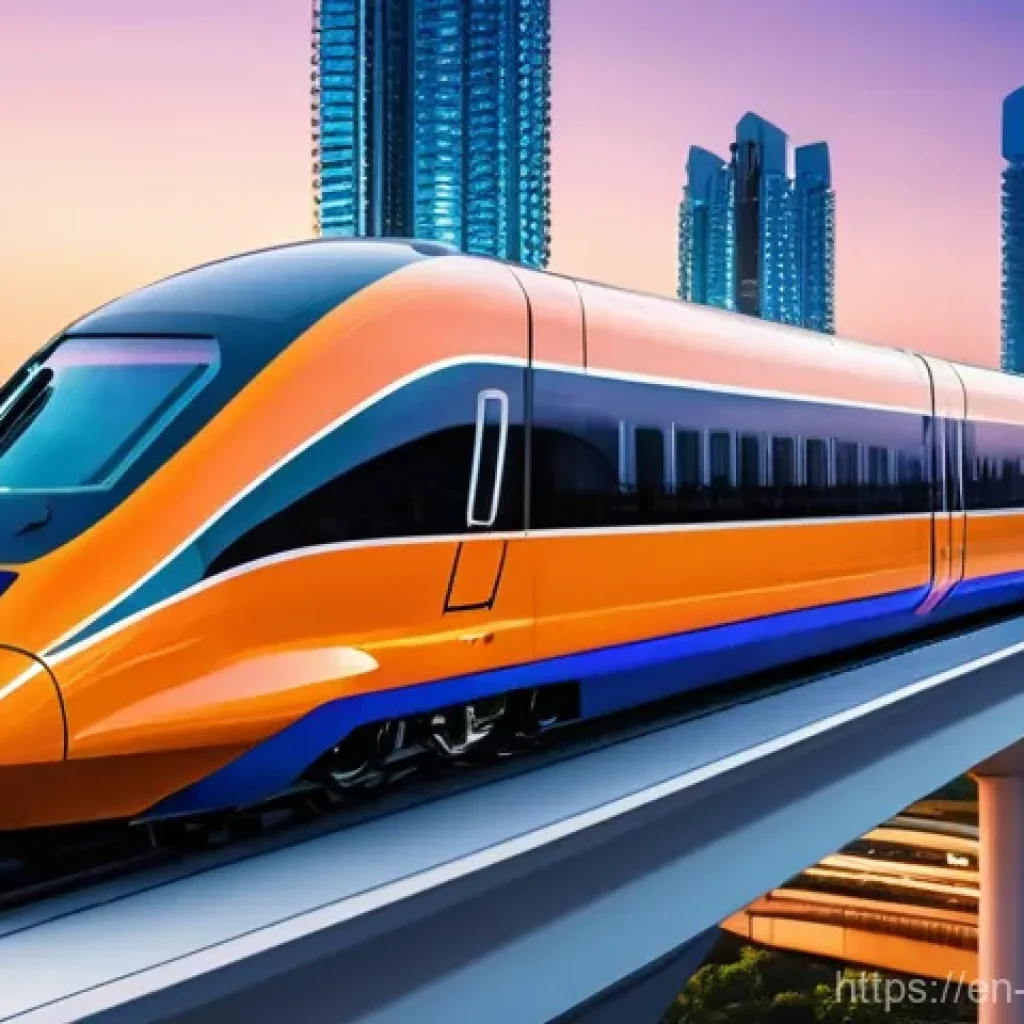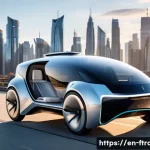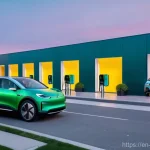Remember when the idea of bullet trains zipping across countries felt like something straight out of a sci-fi flick? Well, friends, that amazing future is now undeniably here, and it’s completely revolutionizing the way we travel, connect, and even live!
I’ve personally watched the evolution of high-speed rail with such excitement, seeing how it’s not just about getting from A to B faster, but about unlocking entirely new economic opportunities and shifting urban landscapes.
Think about it: quicker commutes, more accessible weekend getaways, and a whole new outlook on what’s possible for sustainable travel. It’s a game-changer, but like all big innovations, there’s a lot to consider – from the incredible engineering feats to the ongoing conversations about its environmental footprint and financial viability.
Let’s dive deep into understanding this fascinating transformation and what it truly means for our future.
The Unstoppable March of Superfast Trains
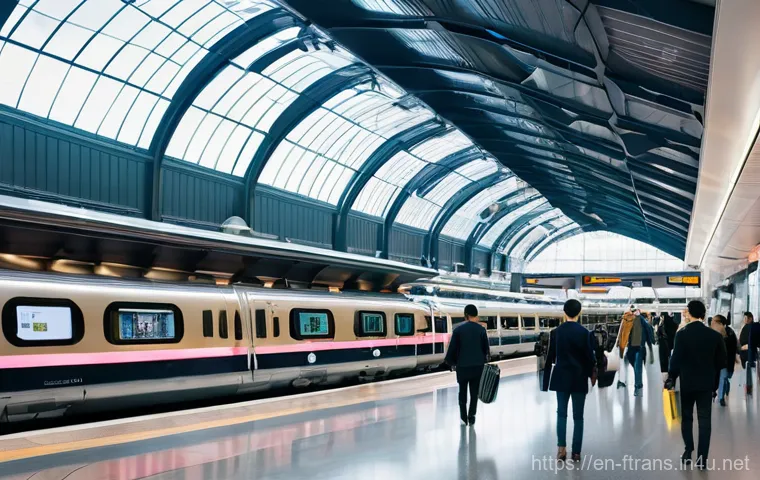
Honestly, it still gives me a thrill to think about how far we’ve come with high-speed rail. I remember watching documentaries about Japan’s Shinkansen when I was a kid, and it felt like something from a far-off future that I might never experience. Now, it’s a global reality, zipping passengers across continents at incredible speeds. It’s more than just fast; it’s a beautifully choreographed dance of advanced engineering and meticulous planning, cutting travel times dramatically and making our world feel a little smaller, a little more accessible. From the sleek designs to the silent, smooth ride, every aspect is designed to redefine what we consider “travel.” I’ve personally watched in awe as countries like France, Germany, and China have expanded their networks, transforming landscapes and opening up new possibilities for both business and leisure. It’s a testament to human ingenuity, pushing the boundaries of what’s possible on two rails.
From Dream to Reality: A Global Journey
Think about the sheer ambition required to lay thousands of miles of track, build tunnels through mountains, and bridge vast rivers, all to enable trains to reach speeds exceeding 200 miles per hour. It’s truly mind-boggling when you consider the scale. What started as a vision in Japan post-WWII has blossomed into a worldwide phenomenon, with each nation adding its unique flair and technological advancements. Europe, for instance, boasts an interconnected web of high-speed lines, making a trip from London to Paris as easy as a quick hop. Meanwhile, nations like the US are finally catching up, with exciting projects like California High-Speed Rail promising to bring this incredible convenience to new territories. It’s an ongoing story of innovation, and I find myself constantly looking for updates on the latest speed records or new routes being inaugurated.
Engineering Marvels: What Makes Them Tick
Beneath the sleek exterior of a high-speed train lies a symphony of cutting-edge technology. We’re talking about magnetic levitation (Maglev) in some systems, allowing trains to float above the track, eliminating friction and boosting speed. Then there’s the incredible aerodynamics, designed to slice through the air with minimal resistance. But it’s not just about the trains themselves; the infrastructure is equally impressive. Tracks are laid with painstaking precision, often on dedicated rights-of-way, to ensure stability at blistering speeds. Advanced signaling systems communicate continuously with the train, keeping it safe. And let’s not forget the power systems, which deliver immense amounts of electricity to propel these giants forward. I’m always fascinated by the sheer scale of the challenges engineers overcome to make this possible, ensuring every journey is not just fast, but also incredibly safe and reliable.
Beyond Speed: Reshaping Our Cities and Lives
It’s easy to focus on the “high-speed” aspect of these trains, but the real magic, for me, lies in how they subtly, yet profoundly, reshape our urban environments and daily routines. I’ve seen firsthand how a new high-speed rail line can breathe life into a previously overlooked town, turning it into a vibrant hub connected to major metropolitan areas. Suddenly, that two-hour drive becomes a comfortable 30-minute train ride, completely changing how people think about commuting, living, and even where they choose to work. It’s not just about faster travel; it’s about reducing the friction of distance, allowing more fluid movement of people, ideas, and commerce. This ripple effect extends into everything from housing markets to cultural exchange, truly illustrating the transformative power of infrastructure done right. It’s a change that, once experienced, becomes hard to imagine living without.
Connecting Communities, Bridging Distances
One of the most remarkable things high-speed rail does is weave diverse communities closer together. Imagine living in a charming, smaller town but working in a bustling city an hour away – something that would have been an arduous daily commute by car is now a relaxing ride with Wi-Fi, allowing you to catch up on emails or simply enjoy the scenery. This flexibility opens up new residential options for families, easing urban congestion and promoting more balanced regional development. I’ve chatted with so many people who’ve embraced this new lifestyle, finding a better work-life balance because of these incredible connections. It truly feels like these railways are stitching together the fabric of our society in a much stronger, more sustainable way, allowing us to connect with friends, family, and colleagues with unprecedented ease.
The Rise of Transit-Oriented Development
When a new high-speed rail station pops up, it’s not just a place to catch a train; it often becomes the beating heart of a whole new district. We’re talking about transit-oriented development (TOD), where residential buildings, offices, shops, and entertainment venues spring up around these transport hubs. I’ve seen this happen in cities across Europe and Asia, where station areas transform into vibrant, walkable neighborhoods. This approach reduces reliance on cars, encourages public transportation, and fosters a sense of community. It’s thrilling to witness how these stations become magnets for investment and innovation, creating dynamic urban centers that are both efficient and enjoyable. The foresight involved in planning these integrated developments is truly impressive, proving that high-speed rail is about more than just tracks and trains – it’s about building better futures.
The Green Promise: High-Speed Rail’s Environmental Edge
As someone who genuinely cares about our planet, I find the environmental benefits of high-speed rail incredibly compelling. We’re constantly bombarded with news about climate change, and it can feel overwhelming, but projects like these offer tangible hope. Think about it: a single high-speed train can carry hundreds of passengers, effectively taking dozens, if not hundreds, of cars off the road or a few planes out of the sky. This massive shift immediately translates into a significant reduction in carbon emissions per passenger-mile. While the initial construction does have an environmental footprint, the long-term operational benefits are hard to ignore. It’s a powerful argument for investing in these networks, especially as we strive for a more sustainable future. For me, choosing a high-speed train over a short-haul flight or a long car journey feels like a small, impactful way to contribute to a healthier planet.
A Greener Way to Travel
It’s not just about the direct emissions reduction; there’s a broader ripple effect. High-speed rail is inherently more energy-efficient than air travel for medium distances, and it can often be powered by increasingly green electricity grids. As renewable energy sources become more prevalent, the carbon footprint of high-speed rail only shrinks further. Furthermore, by connecting city centers, these trains reduce the need for car travel to and from airports, lessening urban traffic and associated pollution. I’ve always been drawn to solutions that offer a clear path to environmental improvement without sacrificing convenience, and high-speed rail absolutely fits that bill. It’s an example of how technological advancement can align perfectly with ecological responsibility, offering a truly responsible way to explore the world.
Challenges and Innovations in Sustainable Operations
Of course, no large-scale infrastructure project is without its environmental considerations. The construction phase can impact local ecosystems, and careful planning is essential to mitigate these effects. However, the industry is constantly innovating to become even greener. Think about efforts to use recycled materials in track construction, or the development of more energy-efficient trains. Even the operational aspects are being refined, with regenerative braking systems that feed energy back into the grid, for instance. I find it reassuring to know that the commitment to sustainability doesn’t end once the tracks are laid; it’s an ongoing journey of improvement and innovation. It’s this dedication to continuous refinement that truly makes high-speed rail a beacon of sustainable transportation for the decades to come.
Dollars and Cents: The Economic Engine of Rapid Transit
Let’s get real for a moment: building high-speed rail isn’t cheap. These are monumental undertakings, requiring billions in investment. But what I’ve learned from observing projects worldwide is that the economic returns, both direct and indirect, can be truly staggering. We’re talking about massive job creation during construction – engineers, laborers, planners, manufacturers – and then a continuous stream of operational jobs once the lines are open. Beyond that, there’s the boost to regional economies. New businesses spring up near stations, tourism gets a shot in the arm, and the enhanced connectivity makes regions more attractive for corporate investment. It’s a long-term play, absolutely, but one that, when executed well, pays dividends far beyond the initial expenditure. I often hear people focus solely on the upfront costs, but it’s crucial to look at the entire economic picture.
Boosting Local Economies
The economic impact of high-speed rail extends far beyond the immediate construction sites. Imagine a small town that suddenly finds itself connected to a major city by a 45-minute train ride. Property values can see a healthy boost, local businesses experience increased foot traffic from day-trippers and commuters, and the ease of access makes the area more appealing for new residents and companies alike. I’ve personally seen how these networks can decentralize economic activity, spreading opportunities beyond traditional urban cores. This revitalization isn’t just about money; it’s about creating vibrant, self-sustaining communities. The ability to easily access talent and markets fundamentally changes the calculus for businesses, fostering growth and innovation in unexpected places. It’s a truly powerful engine for regional prosperity.
Investment Returns and Public-Private Partnerships
While often initiated by governments, many high-speed rail projects involve complex public-private partnerships, which I think are brilliant. These arrangements bring together government backing with private sector efficiency and innovation. Investors, both domestic and international, see the long-term value in these networks, viewing them as stable, essential infrastructure. The returns aren’t just in ticket sales, though those are crucial; they come from increased economic activity along the corridor, enhanced tax revenues, and the sheer value added to the regions served. It’s a testament to the belief in the enduring importance of efficient transportation. I find it fascinating how these massive financial commitments are made, not just with current needs in mind, but with an eye towards generations of future benefits.
| Benefit Category | Key Advantages of High-Speed Rail | Impact on Society |
|---|---|---|
| Environmental | Reduced carbon emissions, energy efficiency, less air/road congestion | Cleaner air, progress towards climate goals, sustainable travel options |
| Economic | Job creation, increased tourism, regional development, property value growth | Boosted GDP, revitalized local economies, new business opportunities |
| Social | Improved connectivity, reduced travel times, enhanced work-life balance | Stronger community ties, expanded housing choices, more leisure time |
| Technological | Advanced engineering, safety innovations, continued research and development | Safer travel, benchmarks for future infrastructure, global tech leadership |
Riding the Rails: A Passenger’s Perspective
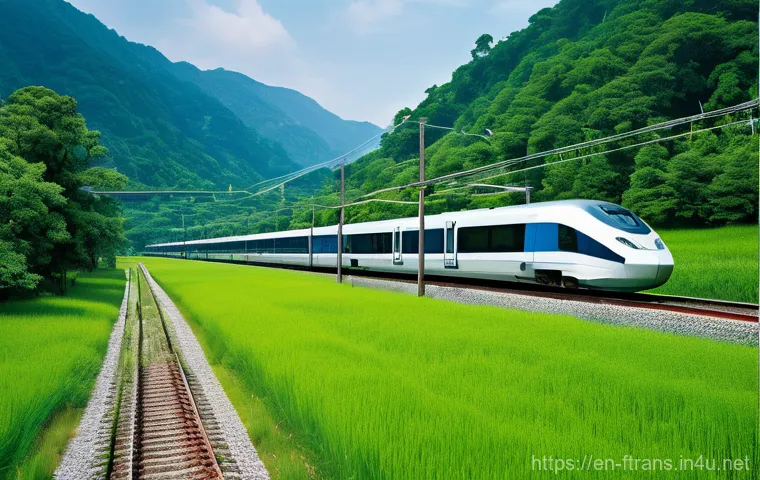
Okay, let’s talk about the actual experience, because that’s where the rubber meets the rail, so to speak. Forget the cramped seats and security lines of air travel for short to medium distances. High-speed rail is a revelation! I vividly remember my first trip on a TGV in France; the feeling of gliding effortlessly at speeds I could barely comprehend, watching the countryside blur by, all while enjoying a decent cup of coffee and actually getting work done (or just staring out the window, which is equally valid!). The comfort, the spaciousness, the ability to simply walk on and off without the usual airport hassle – it truly elevates the entire journey from a necessary evil to an enjoyable part of the adventure. It’s a completely different rhythm of travel, one that feels both efficient and deeply civilized. It’s why, whenever possible, I choose the train.
My First High-Speed Adventure
I’ll never forget it. I was heading from Paris to Lyon, and I was a bit skeptical, having only really known conventional trains. But from the moment I settled into my spacious seat, feeling the powerful yet smooth acceleration, I was hooked. There was no turbulence, no need to turn off electronics, just a serene journey. I looked out the window, watching charming villages and vast fields whiz past, and I remember thinking, “This is it. This is how travel should be.” It wasn’t just about arriving faster; it was about the quality of the time spent en route. I managed to finish a report, enjoy a meal, and still felt refreshed when I stepped off the train in Lyon, ready to explore. That single experience fundamentally changed my perspective on long-distance ground travel and made me a lifelong enthusiast.
The Comfort Factor: Why We Love It
Beyond the speed, the comfort is what truly sells me on high-speed rail. The seats are typically more generous than airline seats, with ample legroom even in standard class. You can often choose to sit at a table, perfect for working or enjoying a meal with travel companions. The quietness inside the carriages, even at top speed, is remarkable, allowing for peaceful contemplation or productive work. And the amenities! Onboard catering, Wi-Fi access, clean restrooms – it all adds up to a far more pleasant experience than battling airport crowds or sitting gridlocked on a highway. It’s not just about getting there; it’s about enjoying the journey itself, arriving at your destination feeling relaxed and ready to go. This focus on passenger well-being is a key differentiator that keeps people coming back for more.
Challenges on the Horizon: Paving the Way Forward
As much as I adore high-speed rail, I’d be remiss not to acknowledge the very real hurdles these projects face. It’s not always a smooth ride, even for the most advanced trains. The sheer cost, as we’ve touched upon, is a massive factor, often leading to public debate and political wrangling. Then there’s the challenge of land acquisition; building new lines often requires purchasing private land, which can be contentious and slow down projects considerably. Public acceptance can also be an issue, especially in densely populated areas where residents might be concerned about noise or visual impact. These aren’t minor issues, and overcoming them requires immense political will, careful planning, and robust public engagement. I’ve watched projects in the US, for example, struggle for years with these exact challenges, showing just how complex these endeavors truly are.
Navigating the Hurdles of Development
The path from concept to completion for a high-speed rail line is paved with significant obstacles. Environmental impact assessments, for instance, are incredibly thorough and can take years to complete, ensuring minimal disruption to natural habitats and local communities. Funding models need to be robust and sustainable, often involving intricate mixes of public and private investment. Furthermore, the technological integration across different regions and even countries demands standardization and cooperation, which isn’t always easy to achieve. I’ve learned that patience and perseverance are key virtues for anyone involved in these projects, as every milestone, from laying the first track to opening the first station, represents a triumph over a myriad of complexities. It’s a testament to the dedication of countless individuals.
Maintaining Excellence: The Long Game
Building the lines is one thing, but keeping them running efficiently and safely for decades is an entirely different beast. High-speed rail infrastructure requires constant, meticulous maintenance. Tracks need regular inspection and repair to ensure perfect alignment. Trains themselves undergo rigorous maintenance schedules to prevent mechanical failures. This ongoing operational cost is substantial and needs to be factored into long-term financial planning. Moreover, as technology evolves, there’s a continuous need for upgrades and modernization to keep pace with global standards and enhance passenger experience. It’s a never-ending commitment to excellence, demonstrating that a high-speed rail network is a living, breathing entity that requires constant care and attention to truly flourish over its lifespan.
The Future is Now: What’s Next for High-Speed Travel
Looking ahead, the future of high-speed rail isn’t just about expanding existing lines; it’s about pushing the boundaries of what’s possible, integrating new technologies, and making these systems even more efficient and user-friendly. I’m incredibly excited about the prospect of even faster trains, perhaps leveraging advanced Maglev systems more widely, or even exploring hyperloop-like concepts that build upon high-speed rail’s core principles. The conversations around seamless multimodal travel, where your high-speed train journey connects effortlessly with local public transport or even autonomous vehicles, are particularly fascinating to me. It’s clear that the railway industry isn’t content to rest on its laurels; it’s constantly evolving, striving to offer an ever-more sophisticated and integrated travel experience. The innovation cycle is truly inspiring, promising even more incredible journeys ahead.
Next-Gen Technologies on the Track
The innovation isn’t slowing down. Engineers are exploring lighter, stronger materials for train construction, which could lead to even greater energy efficiency. There’s also intense research into smarter signaling systems that can optimize train movements and further enhance safety. Autonomous train operation, while still in its nascent stages for high-speed networks, is another frontier being explored, potentially leading to even greater efficiency and capacity. And let’s not forget the passenger experience itself; advancements in connectivity, personalized entertainment, and even augmented reality displays within carriages are all on the horizon. I always feel like a kid in a candy store when I read about these emerging technologies, envisioning how they’ll transform our future travels into something even more extraordinary than they are today.
Integrating Networks for Seamless Journeys
The ultimate vision for high-speed rail, in my opinion, is a truly integrated global network where journeys are seamless, irrespective of borders or different transport modes. Imagine booking a single ticket that takes you from your doorstep, via a local transit system, onto a high-speed train across multiple countries, and then connects you to your final destination using another local transport option. This kind of integration requires immense international cooperation and standardized systems, but the potential benefits for travelers and economies are immense. It’s about breaking down barriers and making long-distance travel as simple and stress-free as possible. I genuinely believe that as these networks mature, we’ll see more of these “smart mobility” solutions emerge, making high-speed rail the cornerstone of a truly interconnected world.
Concluding Thoughts
Whew, what a ride it’s been delving into the world of superfast trains! Honestly, writing this post has reinforced my absolute love for high-speed rail and everything it represents. It’s not just about the incredible speed, though that’s certainly a major draw. For me, it’s the seamless experience, the comfort that makes even long journeys feel short, and the profound way these networks knit our world closer together. I’ve personally felt the shift in how I view travel, preferring the quiet glide of a train over the airport hustle whenever possible. It’s a testament to human innovation, consistently pushing boundaries to create something truly exceptional. If you haven’t experienced it yet, I genuinely encourage you to give it a try. It might just change your perspective on travel, just as it did for me. It’s truly more than just a trip; it’s an experience.
Useful Information to Know
1. Planning your high-speed rail journey is key to a smooth experience. I’ve always found that booking your tickets well in advance, especially for popular routes or during peak seasons, can save you a significant amount of money. Many operators offer cheaper “early bird” fares, and sometimes even dynamic pricing means booking on a Tuesday afternoon could be cheaper than a Friday evening. Also, consider investing in a rail pass if you’re planning multiple long-distance trips across a region like Europe – it can be a fantastic value, allowing for flexibility and cost savings you wouldn’t get with individual tickets. Always compare options, whether it’s direct through the operator’s website or via trusted resellers, to find the best deal and itinerary that suits your needs. You’ll thank yourself for the foresight when you’re relaxing on board!
2. The onboard experience is where high-speed rail truly shines. Forget cramped airline seats; most high-speed trains offer generous legroom and comfortable seating, often with the option to select a seat with a table, which is perfect if you plan to work or dine. Wi-Fi is generally available, sometimes for a fee, and power outlets at your seat are pretty standard, allowing you to keep your devices charged. Don’t forget about the dining cars or at-seat trolley service, offering everything from coffee and snacks to full meals. Luggage allowances are typically more generous than airlines, too, meaning less fuss about packing. I always make sure to bring a good book or some headphones to fully immerse myself in the serene journey, or simply enjoy the ever-changing scenery outside my window.
3. Navigating high-speed rail stations can be a breeze if you know what to expect. Unlike airports, these stations are usually located right in city centers, making onward travel incredibly convenient. I always recommend arriving about 20-30 minutes before departure, giving you ample time to check the departure boards, locate your platform, and grab a quick coffee. Security checks are generally less intrusive and quicker than at airports, often just a quick bag scan, and there’s no need to take off your shoes or empty your liquids. Platforms are typically well-signposted, and staff are usually on hand to assist. Just remember that the train doors often close a couple of minutes before departure, so don’t cut it too fine! A little pre-planning makes for a stress-free start to your journey.
4. When should you choose high-speed rail over flying? This is a question I get a lot, and for distances under 500-600 miles (or around 800-1000 kilometers), the train often wins hands down. Think about it: city-center to city-center travel, no lengthy check-in lines, no security queues that make you want to pull your hair out, and no need to factor in an hour-long commute to a remote airport. Factor in the time saved by not dealing with those airport hassles, and a 3-hour train journey can often be faster door-to-door than a 1-hour flight. Plus, the ability to work, relax, and enjoy the scenery in comfort truly enhances the overall travel experience. It’s a genuine contender for medium-haul journeys, and once you try it, you’ll understand why so many people are making the switch.
5. The future of high-speed rail is truly exciting! Keep an eye out for continuous advancements in train technology, including even more energy-efficient models and potentially faster speeds. Many countries are constantly expanding their networks, so new routes connecting more cities are always on the horizon. There’s also a big push towards greater international connectivity, making cross-border travel even more seamless. Smart ticketing systems and integrated travel apps are evolving to make planning and booking multi-modal journeys – combining high-speed rail with local transport – incredibly simple. So, stay updated on rail news; you might find a fantastic new route opening up that makes your next adventure even more accessible and enjoyable. The innovation just keeps coming!
Key Takeaways
To wrap things up, high-speed rail isn’t just a marvel of engineering; it’s a game-changer for how we live, work, and explore. We’ve seen how it dramatically cuts travel times, offers unparalleled comfort, and connects communities in ways traditional transport simply can’t. Beyond the passenger experience, its environmental benefits are crucial for a sustainable future, and the economic ripple effects – from job creation to regional development – are undeniable. While building these networks presents significant challenges, the unwavering commitment to innovation and progress ensures that high-speed rail will continue to be a cornerstone of modern infrastructure. It’s a journey that continually evolves, promising an even more integrated, efficient, and enjoyable travel experience for generations to come. Truly, a testament to what we can achieve when we aim high.
Frequently Asked Questions (FAQ) 📖
Q: How is high-speed rail actually changing our day-to-day lives and making travel better?
A: Oh, this is where it gets exciting! From what I’ve seen, high-speed rail isn’t just about faster speeds, it’s about gaining back precious time and making travel genuinely enjoyable again.
Think about it: instead of the airport hassle – endless security lines, cramped planes, and the trek out to distant terminals – you can often hop on a high-speed train right from the heart of one city to another.
I’ve personally experienced how much more productive (or wonderfully relaxed!) you can be on a train, working with Wi-Fi, enjoying a meal, or simply watching the world whiz by from a comfortable seat.
For folks living in bustling areas like the Northeast Corridor in the U.S. or across Europe, it transforms what used to be a grueling two-hour commute into a quick, stress-free 20-minute jaunt.
That means more time with family, more time for hobbies, or even just more sleep! It opens up spontaneous weekend trips, makes visiting friends a breeze, and truly shifts our perception of distance.
It’s truly a game-changer for quality of life and making travel feel less like a chore and more like an integral, pleasant part of the journey.
Q: Beyond just getting places quicker, what are the big economic and community-wide benefits that high-speed rail brings?
A: That’s an excellent question, and it’s where the vision really expands. High-speed rail isn’t just a transportation project; it’s a massive economic catalyst.
My take is that these projects inject life into regions in so many ways. First off, the sheer scale of building these networks creates thousands of jobs – from engineers and construction workers to hospitality staff for the new stations.
We’re talking about direct, indirect, and induced jobs that fuel local economies. But it doesn’t stop there. Once operational, high-speed rail boosts regional development significantly.
Imagine smaller cities suddenly becoming easily accessible hubs for business and tourism, drawing in investment and making them more attractive places to live and work.
I’ve observed how areas around new stations can truly transform, with new businesses, housing, and cultural venues popping up, revitalizing entire urban centers.
It can even help alleviate congestion in mega-cities by making “second-tier” cities more viable for commuters. And let’s not forget the environmental angle: by offering a highly efficient, often electrically powered alternative, high-speed rail can significantly reduce carbon emissions by taking cars off congested roads and replacing short-haul flights.
This means cleaner air and a step towards a more sustainable future, which is a huge win for everyone.
Q: While high-speed rail sounds amazing, what are some of the biggest challenges or hurdles that these projects face?
A: It’s true, while the benefits are compelling, building and sustaining high-speed rail is no small feat, and I’ve seen firsthand the complex discussions around these projects.
One of the most significant challenges is undoubtedly the immense upfront investment and securing consistent funding. These are multi-billion-dollar endeavors, and costs can easily balloon due to unforeseen issues, land acquisition, or complex engineering in difficult terrains or densely populated areas.
Just look at some of the projects here in the U.S., like California’s High-Speed Rail, which has faced significant cost increases and delays, highlighting how tricky it is to manage such large-scale infrastructure.
Beyond the financial aspect, there are considerable engineering hurdles – designing tracks that can handle incredibly high speeds, building tunnels through mountains, or constructing viaducts over rivers, all while ensuring absolute safety.
Integrating new high-speed lines into existing, often century-old, rail networks can also be incredibly complex. And we can’t ignore the environmental and community impacts during construction, such as land use, noise, and disruption, although efforts are made to mitigate these, like recycling construction materials and planting trees to offset emissions.
Finally, there’s the political will and long-term commitment needed; these projects often span decades and require sustained support across different administrations and public opinion.
It’s a huge undertaking, but when done right, the payoff is truly transformative.
